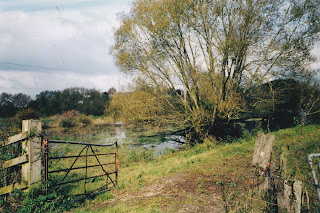British Seagull Outboard Motors
Our Seagull is a noisy, incontinent old thing. There is just
something about this piece of machinery though that earns it a place in our
lives and means that we continue to care for it even though we got a
replacement electric engine a few years ago.
They are very loud, really heavy and they can be tricky to
start. It takes a certain knack. Once the noise, smoke and general awkwardness
got too much for a pleasant trip out for just fun we started looking at
electric versions.
In La Rochelle
 |
| The engine, stored on the back of the boat |
We acquired the Seagull many years ago with our first
powered vessel. Ours is a ‘British forty’ probably built in August 1979 (EFPC
clutch 2-3 horse power longshaft if you’re really interested). These things
were built to last. It was a good outboard motor for a 17 foot trailer sailor
and did a good few miles in and out of Weymouth Avon and our fibreglass/wooden
dinghies so it has seen a lot of use as a motor for the tenders.
 |
| The old fuel tank, looking a bit rusty |
This British built engine is well known for its reliability. There are many
clips on YouTube of people proving the immortality of these motors even having been submerged in sea water.
We have just got a new brass petrol tank (thanks ebay) to
replace the old rusty steel one. In fitting the new tank the fuel filter has
had a bit of a clean up having collected quite a lot of bits. We have always
had a rag to collect the drips as we go along. For many years we used an old
babies bib which did the job really well.
 |
| Fuel cock with extra dog hair! |
Despite these things we still love the Seagull. Even though
we replaced it with the electric motor, we still couldn’t get rid of it. We are
presumably not alone. There are motors like ours in museums, celebrated on
websites and in owner groups. There is even one displayed on the wall in our
local pub. There is something a bit special about the British Seagull motor.
 |
| The Skipper working on the Seagull |


It is very useful. Thank you for the information. We at salmarine offers the new ribs boats and boat engines and boat trailers. Have a look.
ReplyDelete